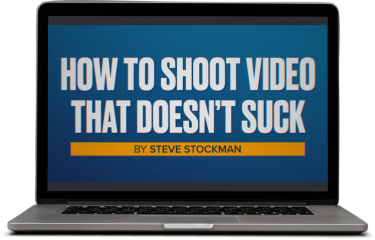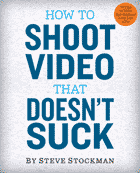This week a post on Linked-In reminded me that all good video must “ask for the order” and contain a clear “call to action.”
This concept was, as far as I can tell, invented by someone in an ad agency, maybe in the ’80s, and repeated enough that many people take it as gospel. The idea is that your marketing video must tell the customer exactly what you want them to do, and then request that they do it.
Thus a TV commercial that includes the magic phrase “Buy a Toyota tomorrow and save $200!” is presumed to be way more effective than the same commercial without. If you want them to do something, you have to ask. Simple right?
Simple, except that if direct requests worked in marketing, this year’s award-winning Super Bowl commercial would be 30 seconds of white letters on a black screen: “GO BUY DORITOS. NOW.” (excuse me, I’m tearing up at the thought of how perfect that would be. SNIFF. So…beautiful!)
“Asking for the order” doesn’t work because brains. Starting roughly at age 0, we each have our own. Plus our own needs, own lives, and our own goals. Just because you’ve told us to do something doesn’t mean we’ll do it. The whole concept is completely contrary to the way humans actually get things done. Here I note that nobody writes articles suggesting we “ask for the order” to motivate kids or spouses.
Yet the concept still lives, mostly because it’s a great business ass-coverer. It’s easy to understand and we can point to it when we’ve done it. Which helps us keep our jobs when it doesn’t work: “We asked for the order. Look, right here: the announcer says ‘Come to our Sale.’ Audiences, man…so unpredictable”
For those more interested in effective video than butt-shielding, I invite you to replace “ask for the order” with a concept that’s harder to execute and less obvious: Intriguing your audience. While “Asking for the order” tries to beat the audience into action, intriguing your audience invites them to participate in your video. Intriguing videos pull you in and excite your brain. They make you wonder what’s going on, what things mean, and what will happen next. Best, they allow you space to come to your own conclusions and when you do, take action on your own.
Intrigue can be tough to explain, but easy to see. An early and influential master of intrigue, Tony Schwartz, started doing ads in the 1940s. Here’s a still-brilliant anti-smoking PSA he did in 1963. Over half a century later, the spot still pulls you in and makes you want to know what happens next. It doesn’t ask for the order. It makes you ask yourself. That’s intrigue.
Schwartz’s book The Responsive Chord has been re-released in a new edition, and it’s a great read for anyone serious about video marketing. Everything Schwartz wrote in 1973 is still true today. Because even though our media is new, the brains we’re trying to affect are largely the same old model. (Extra Intrigue Credit: check out Schwartz’s classic “Daisy” ad for Lyndon Johnson’s 1964 presidential campaign.)
“Asking for the order” may help you keep your job in the short term, but intrigue actually changes consumer behavior and helps your company’s bottom line. It’s a little mysterious. It’s harder to see and to measure.
But once you start watching for it, you’ll realize the best marketing videos and TV commercials (and films! and TV shows!) pull you in, engage your brain, and make you a participant.
Do you have a question? Is it about video? Would you like to see it answered here? Please note that these questions are all rhetorical, and that you should click here to ask.

Get a free preview of the new video course!
Sample two lessons from our new video course free right now. No signup or credit card required!






 Steve Stockman is a writer/ producer/ director in Los Angeles. How to Shoot Video That Doesn't Suck, available in 9 languages, is the best selling video how-to book in the world. You can find the updated (2017) edition from Workman Publishing wherever you get books, ebooks or audiobooks.
Steve Stockman is a writer/ producer/ director in Los Angeles. How to Shoot Video That Doesn't Suck, available in 9 languages, is the best selling video how-to book in the world. You can find the updated (2017) edition from Workman Publishing wherever you get books, ebooks or audiobooks. 